Incredible animal pictures from the Wildlife Photographer of the Year 2020
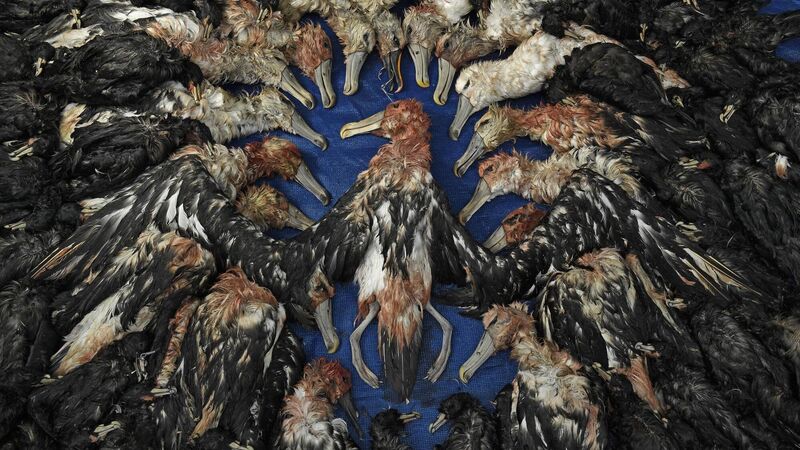
Memorial to the albatrosses by Thomas P Peschak, Germany/South Africa:
Unlikely as it seems, this display illustrates a South African conservation success story. It represents the comparatively smaller number of deaths of seabirds — here shy albatrosses and a yellow-nosed albatross (a longline hook still in its bill) and white-chinned petrels — caught in 2017 on longlines set by Japanese tuna-fishing boats off South Africa’s coast. A boat’s main line can extend for more than 80km (50 miles), with thousands of baited hooks. When small seabirds dive down and bring the baited hooks to the surface, petrels and albatrosses try to swipe their catches whole, hook themselves and drown.
In recent years, more seabird-friendly fishing practices — setting lines after dark, using weighted hooks that sink more quickly, dragging bird-scaring lines — have dramatically reduced the annual bird bycatch off South Africa. It is estimated that every year around the world, more than 300,000 seabirds, including 100,000 albatrosses, are still killed by longlines alone.
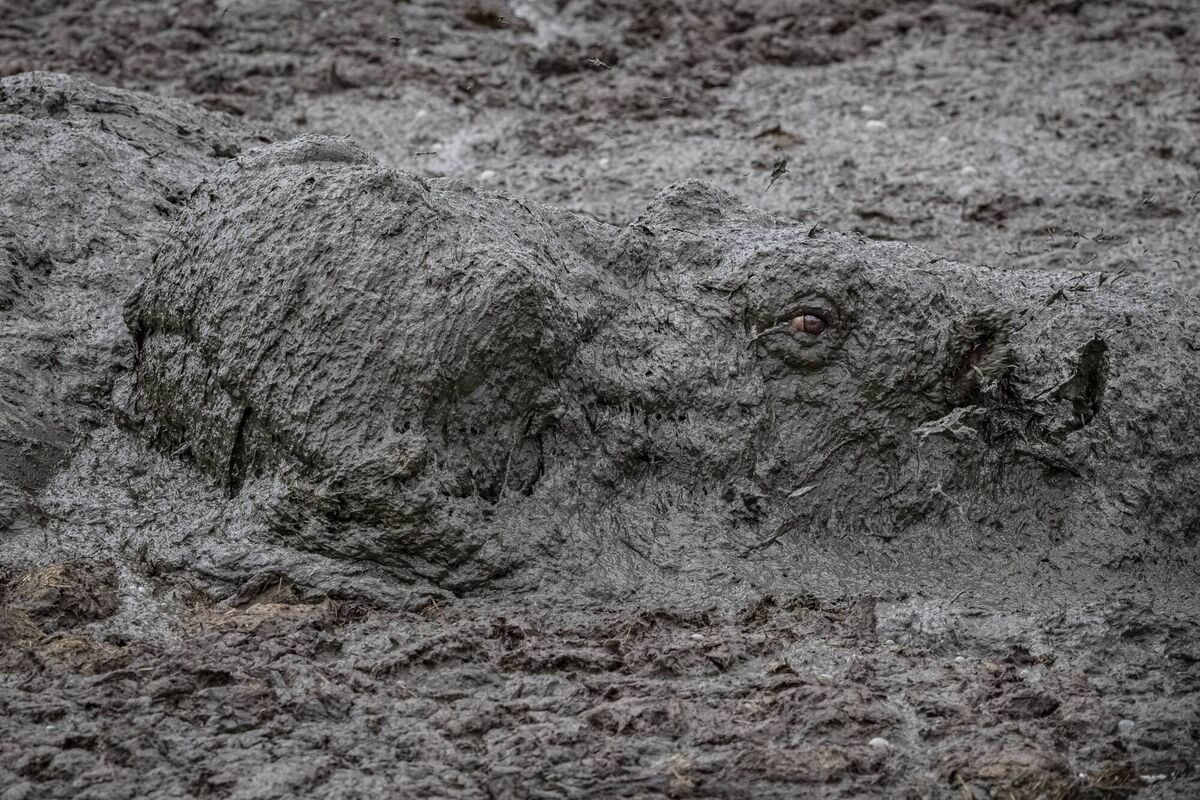
This was taken of a hippo in the mud at the Mara River in Kenya. ‘I noticed that, every time they emerged to breath, the mud would create a mask on their faces and I tried to capture that moment with my camera,’ said Fragazo.
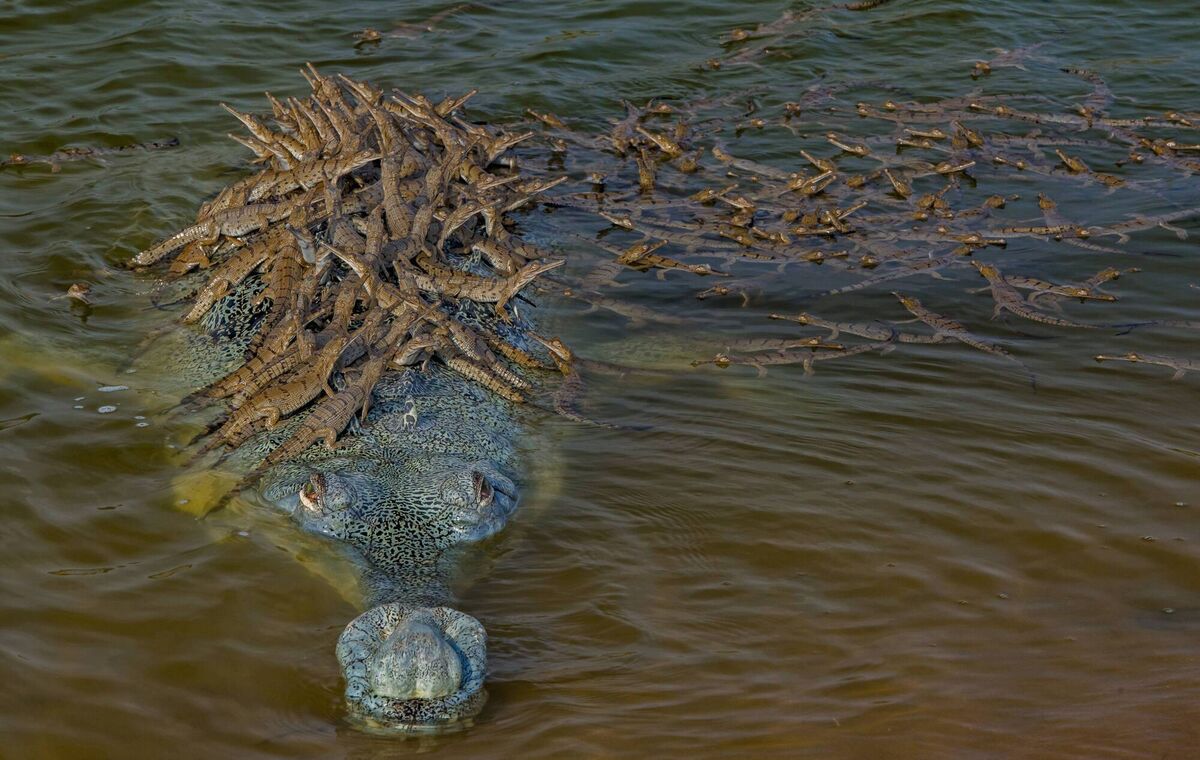
Ever watchful, a large male gharial — at least 4m (13 feet) long — provides support for his numerous offspring. The long-snouted crocodilian is now considered critically endangered, with just an estimated 650 adults remaining.
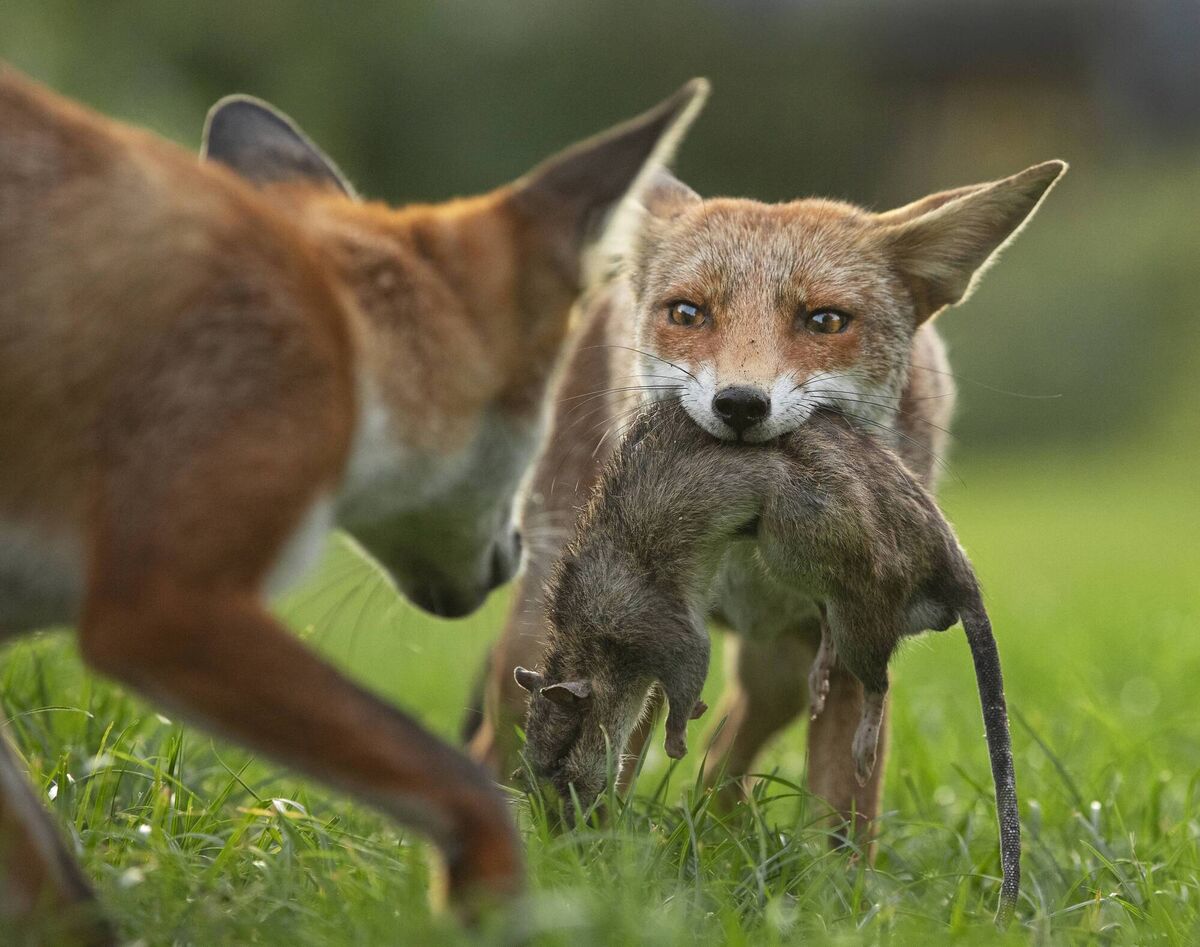
With a determined stare, a young fox holds tight to her trophy — a dead brown rat — as her brother attempts to take it. For the past four years, Matthew has been photographing the foxes that live on a London allotment.
Like all foxes, they are opportunistic, taking advantage of all available food, whether human or pet food discarded. The rat could have been provided by one of the adults — which continue to feed their young into August — but it is rare for foxes to catch rats.
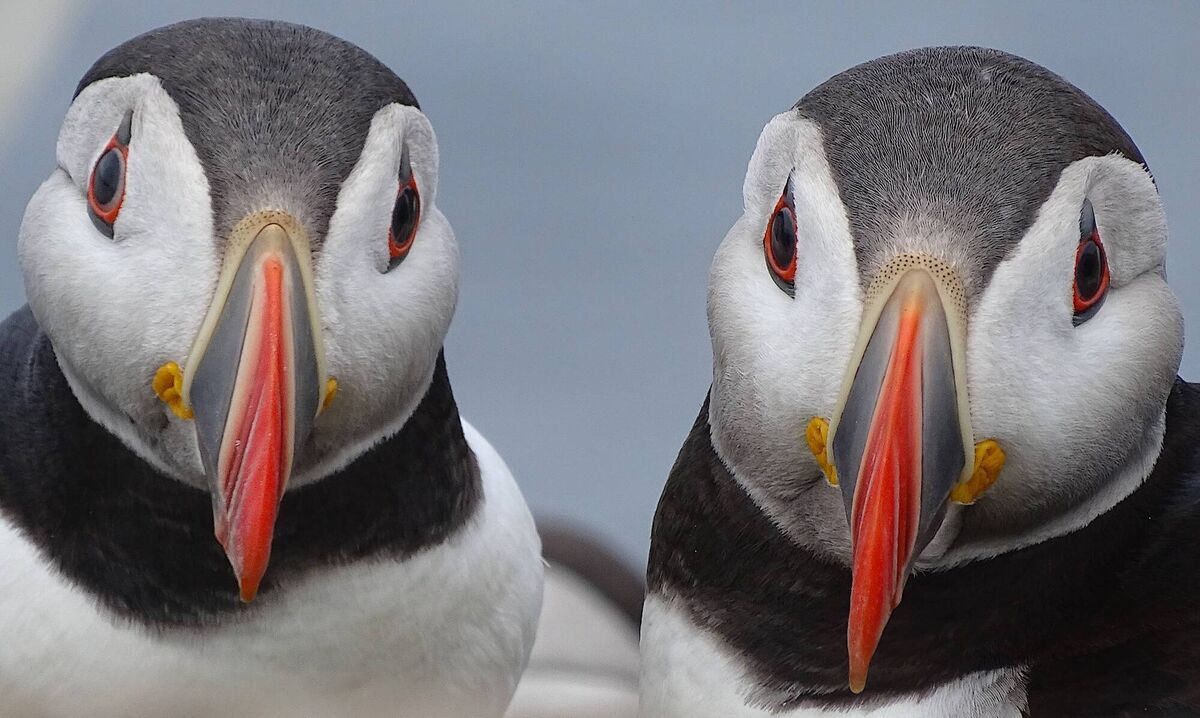
Taken at the Farne Islands off the coast of Northumberland, England, Evie got the picture while waiting by the puffins’ burrows, watching the adults returning with mouthfuls of sandeels. Puffins also have several nesting sites in Ireland, but are in decline worldwide.
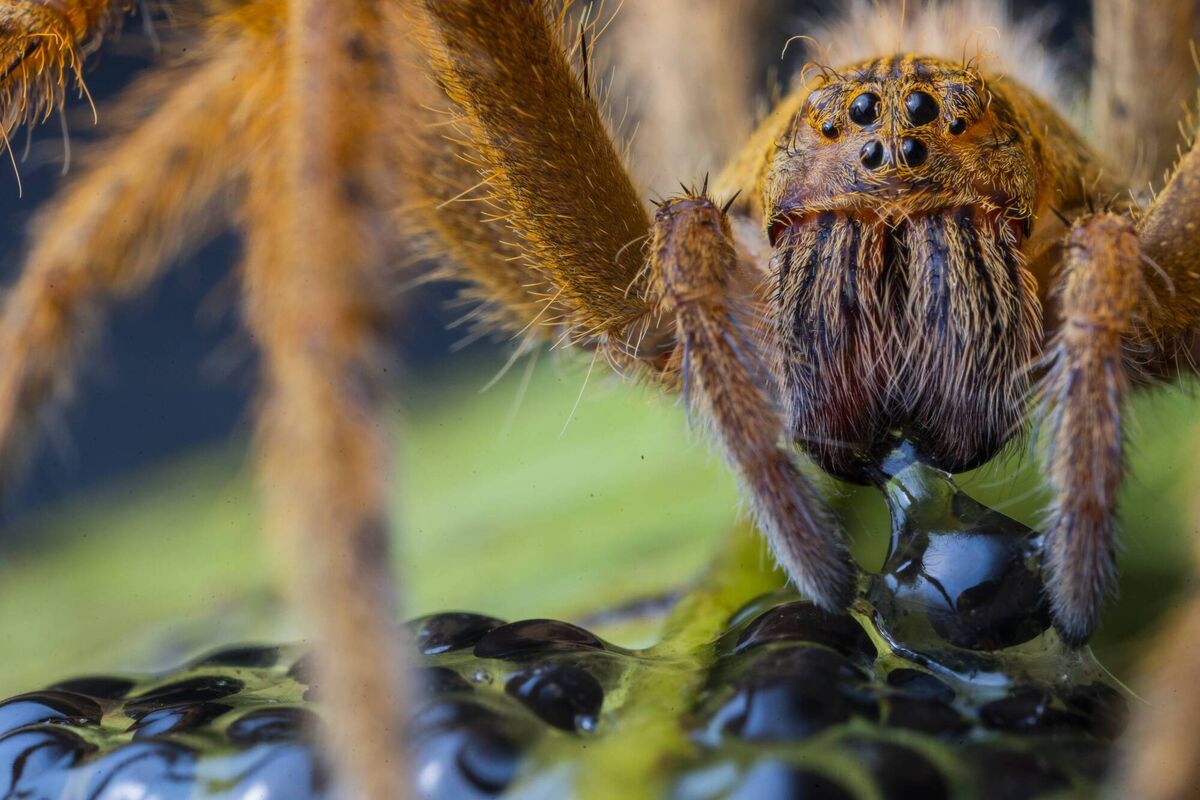
A large wandering spider – black, hooked fangs tipping its bristly, striped mouthparts –pierces the egg of a giant glass frog, injects digestive juices and then sucks in its liquefied prey in Manduriacu Reserve, northwestern Ecuador. The wandering spider with an 8-centimetre (3-inch) leg span is devouring eggs of a glass frog.
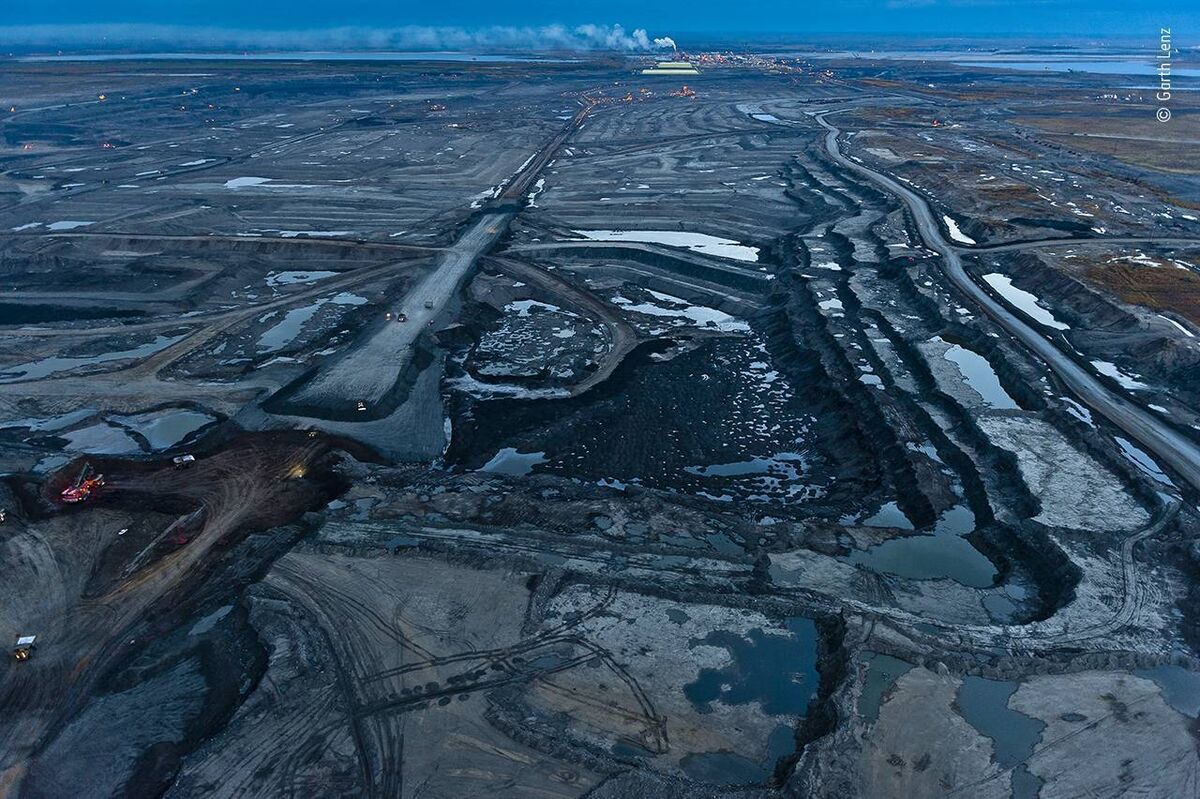
As twilight falls on the Alberta tar sands, the stripped landscape takes on an oily blue tint. This vast expanse –once boreal forest –is just one section of the Mildred Lake Tar Mine, itself just one of the region’s many tar mines that together form the world’s third largest oil reserve. The environmental impact of the whole operation is three-fold. First, the mines are created by clearing boreal forest, arich ecosystem and a vitally important terrestrial carbon sink. Second, the process of extracting the low-grade oil is hugely energy intensive and, according to the region’s First Nation indigenous people, continues to pollute. Third, fully exploiting this massive emissions‑intensive fuel source will result in the further release of huge amounts of carbon that will, say climate scientists, contribute disproportionately to global emissions and make it impossible to keep under the 2°C global warming threshold and avoid catastrophic climate change.




